Clackmannan Tower stands at the summit of King's Seat Hill, on the western edge of Clackmannan, in open fields. However, it did not always look like it does now.
There is believed to have been a fortified structure or castle, a royal residence situated on King's Seat Hill, Clackmannan from the reign of Malcolm IV in 1153 to 1165 and a Castle of Clackmannan is mentioned in a royal charter from the 1200's. It's thought that the Castle was probably a Motte and Bailey type structure to help increase its defensibility. The Castle is believed to have been Malcolm IV's Hunting Lodge with its close proximity to the King's Forest of Clackmannan, which originally surrounded the hill. The original streets of Clackmannan flowed east, north and south downhill from the tower, in a style reminiscent of old Edinburgh and Stirling, where grander castles can be found.
The Castle was then used at least occasionally by King William I of Scotland (1165 - 1214) followed by King Alexander II (1214 -1249) and King Alexander III (1249 – 1286). When Alexander III died without heirs, this led to the first Scottish War of Independence (1296-1328), with the Castle of Clackmannan effectively coming under the rule of Edward I of England. The Castle came back into Scottish control after the defeat of Edward II of England by King Robert I of Scotland, otherwise known as Robert the Bruce at the Battle of Bannockburn in 1314. The war officially ended with the Treaty of Edinburgh, which was signed at Northampton, England in 1328.
King Robert the Bruce is known to have lived in the Castle at times between 1316 and 1318. He visited regularly thereafter until 1327, just two years before his death. It is believed that at this point in time that the King's furniture was moved to whichever residence he was currently using. As system of portable windows was developed so that they could be moved from residence to residence as glass was extremely expensive. This meant that the principal rooms used by the King were glazed when he was in residence.
After King Robert the Bruce's death it is unclear for a period who lived in Clackmannan Castle, until 1334 when King David II rewarded his Cousin Thomas Bruce with the Castle and the Barony of Clackmannan after organising an uprising against English rule.
After Thomas' death around 1358 his son Robert Bruce became the 2nd Baron of Clackmannan and lived in Clackmannan Castle. Around this point in time the present-day northern tower structure was built using pink sandstone. There were ground floor cellars, a great hall on the 1st floor and a guard house at the top of the tower. The castle entrance would have been via a staircase into the great hall on the 1st floor.
During the 15th century various alterations were made to the castle as standards of living improved. These included the heightening of the 14th century sandstone tower. This can be seen by the different sandstones.
 |
 |
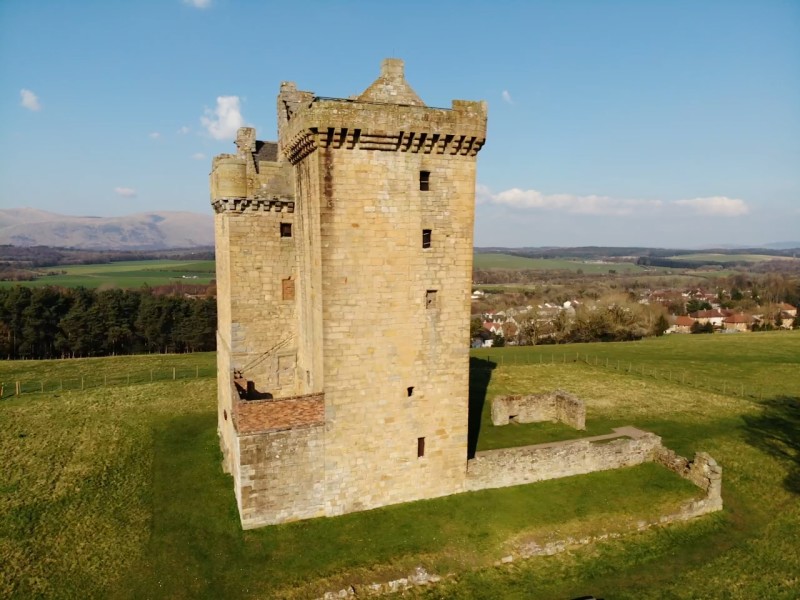
At this time a second tower was added which formed a substantial L shaped Tower House. The new southern tower was built with coursed rubble and ashlar blocks, to a total of five 5 stories, while the original northern tower has four stories. Cover was provided over the internal staircases by a single storey cape house, in the angle between the towers. The original northern tower had a spiral staircase between the ground and 1st floor where a kitchen was now installed. A spiral stair in the thickness of the wall served all floors, which contain a single room on each floor in each tower. The tower building has commanding views over the River Forth to the South, to the carse towards Alloa and Stirling to the west and the range of the Ochil Hills to the north. The village of Clackmannan covers the approach from the east.
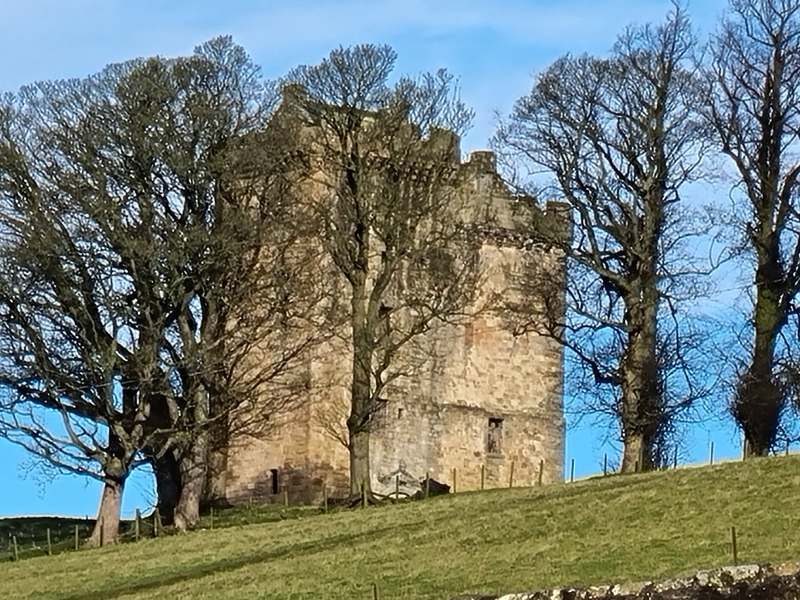 |
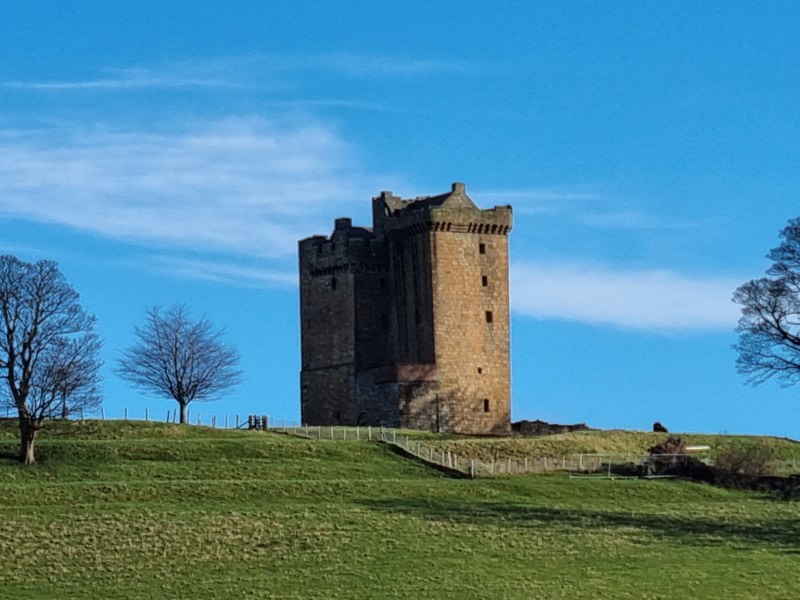 |
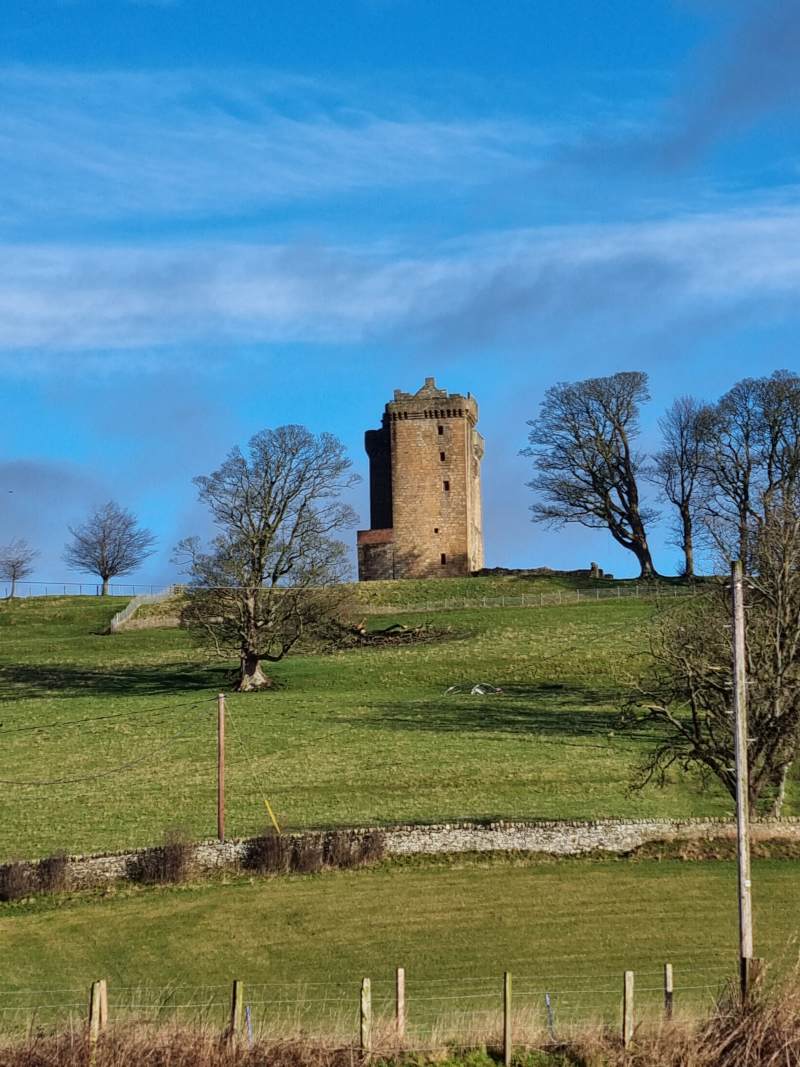
Throughout the 16th and 17th centuries further alterations continued to be made to the tower. These included the tower now being fully glazed as well as a new straight staircase to replace the spiral one in the northern tower between the ground and 1st floors. To strengthen the tower's defensibility, battlements and machicolation were added, machicolations are holes in the battlements floor through which stones and other projectiles or fluids can be dropped onto anyone attacking the building.
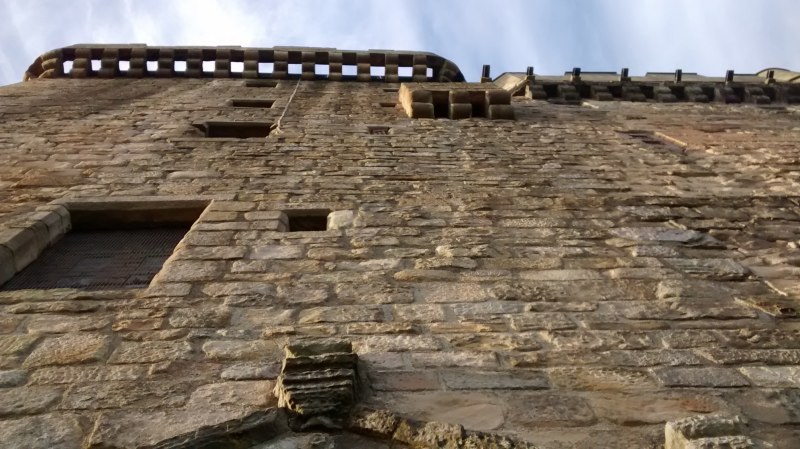
A new entrance door was established in the southern tower, this is an arched doorway with a pedimented frame, there is a tree carved into the recess centrally above the door and there are fluted Doric pilasters on either side of the door.
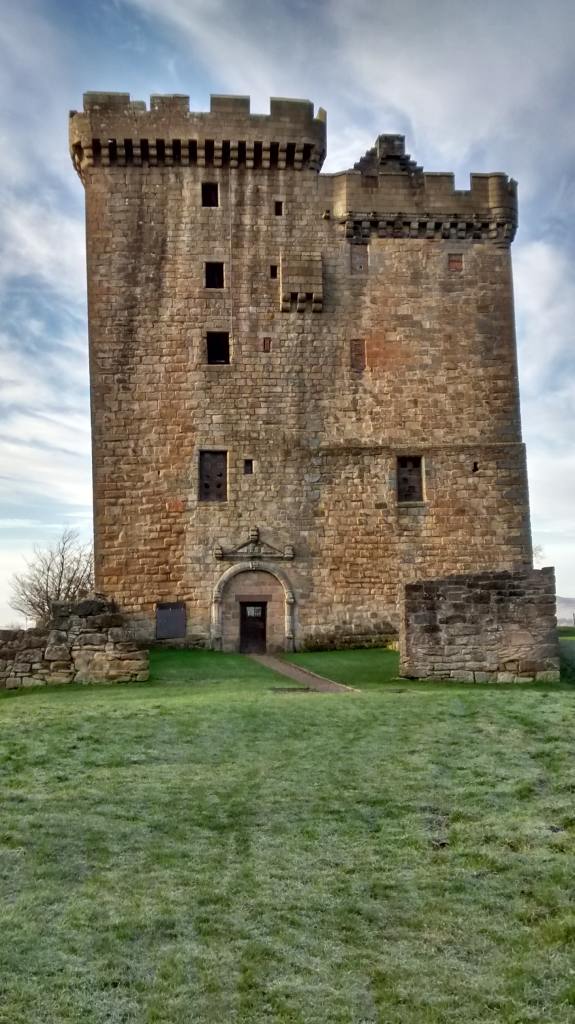
This entrance was used as the main entrance to the tower even once a mansion house was attached to the west side of the Castle in the late 17th century. The mansion house was south facing and would have had a spectacular view over the River Forth, it would have had a field of vision covering the river as far west as Stirling, being able to clearly see Stirling Castle and the hills beyond. There would also have been spectacular views eastward being able to see Kennetpans, Falkirk and the river Forth.
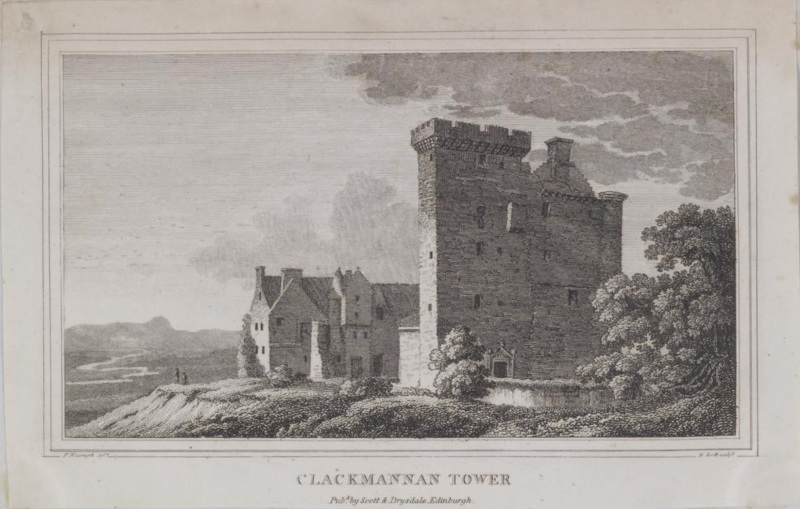
A sketch of what Clackmannan Tower may have looked like with the 17th century mansion attached.
Picture provided by Canmore.org.uk, https://canmore.org.uk/collection/1075173
The mansion house is believed to have had distinctive crow stepped gables and turrets to the southwest and a walled protected entrance court complete with a motte to the east.
The tower was inhabited by the Bruce family descendants until 1791. However, for most of the 18th century the Bruces were in dire financial straits, due to losses from business concerns. Henry Bruce, 15th Baron of Clackmannan, fought for the Jacobites in 1745, but was not forfeited. Henry died in 1772, aged 72. The property then passed to his wife, Lady Catherine Bruce. Whilst living in the Tower, Lady Bruce enjoyed entertaining and 1787 she invited Robert Burns to Clackmannan. During his visit Lady Bruce used the sword of King Robert the Bruce to "knight" Robert Burns in the mansion house.
Until Lady Bruce's death Clackmannan Tower had been the home of King Robert the Bruce's helmet and his two-handed sword. It is unknown whether either relic saw battle. The items had been presented to this branch of the Bruce family by King David II on the realisation that his branch of the family was to end as he had no heir.
For many years it was a Bruce Family and local tradition for the locals to be allowed into the tower annually so that they could see the sword and helmet. On the death of Lady Bruce, the sword and helmet - despite being blackened with age, were inherited by the Bruce family branch based at Broomhall House near Dunfermline.
The mansion house was demolished after the last member of the family, Catherine Bruce, died in 1791, aged 91. It's thought that some of the mansion house may have been recycled into the Parish Church, built in 1815 around a smaller church dating back to 1249.

By David Allan (1744–1796) (school of) - Catherine Bruce of Clackmannan,
Public Domain, https://commons.wikimedia.org/w/index.php?curid=66176940
The tower is all that remains, with only some ground markings giving any idea that there was ever a mansion present. In 1948 parts of the east wall collapsed due to mining subsidence from the local coal mines. There were further collapses during the 1950's.

This shows some of the damage caused by the mining subsidence.
Photograph from Canmore.org.uk https://canmore.org.uk/collection/1200516
Eventually the Ministry of Works repaired the damage externally after concern developed that the tower may be lost completely. After the repairs the entire building was left with a southern tilt due to the mining subsidence, causing some damage to the foundations. The tilt can be seen in some of the pictures above.
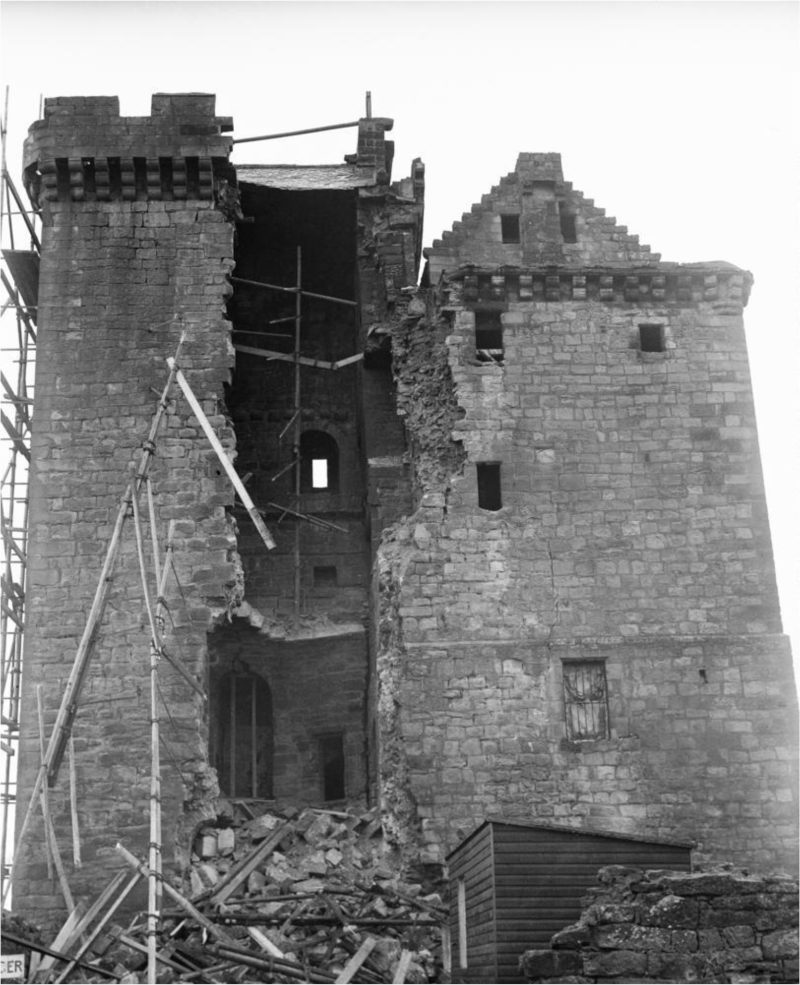
The extent of the damage and therefore repairs required on the west wall of the original North Tower.
Photograph from Canmore.org.uk https://canmore.org.uk/collection/1200540
Historic Scotland have since taken over repairs to the building. It is now a Category A listed building, gaining this designation on June 9th, 1960. They have repaired much of the external damage and have stabilised the building internally. They are working towards full public access. For now, the tower can normally only be viewed externally. However, some 'open days' have allowed guided and supervised tours to happen. Clackmannan Tower is just one of the places to visit on the Clackmannanshire Tower Trail.
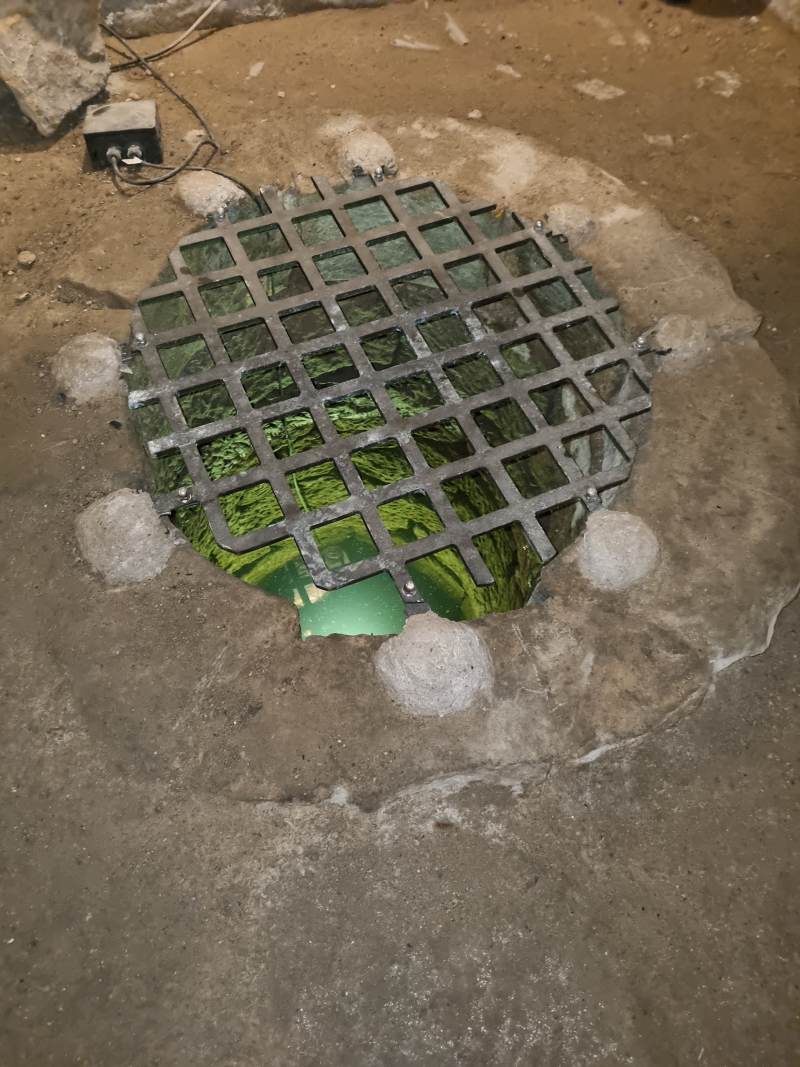 |
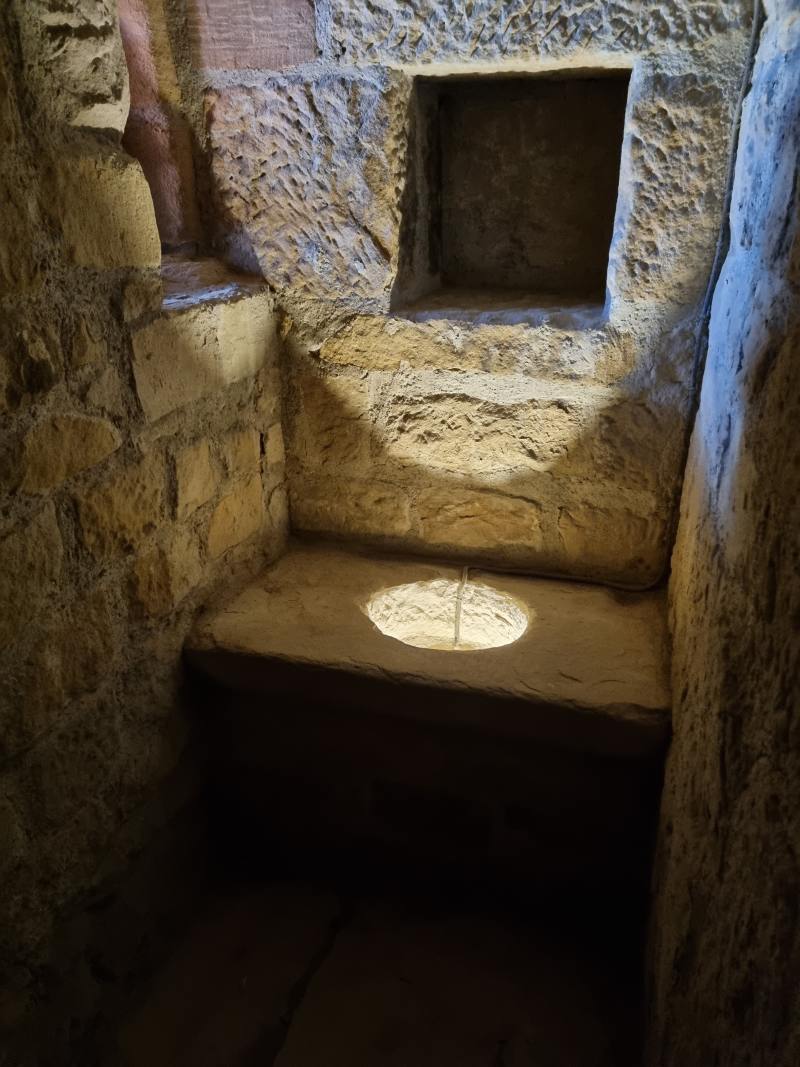 |
Some internal pictures from a 2022 open days tour - the internal well (left), and the privy (right)

The view to the entrance hallway from above
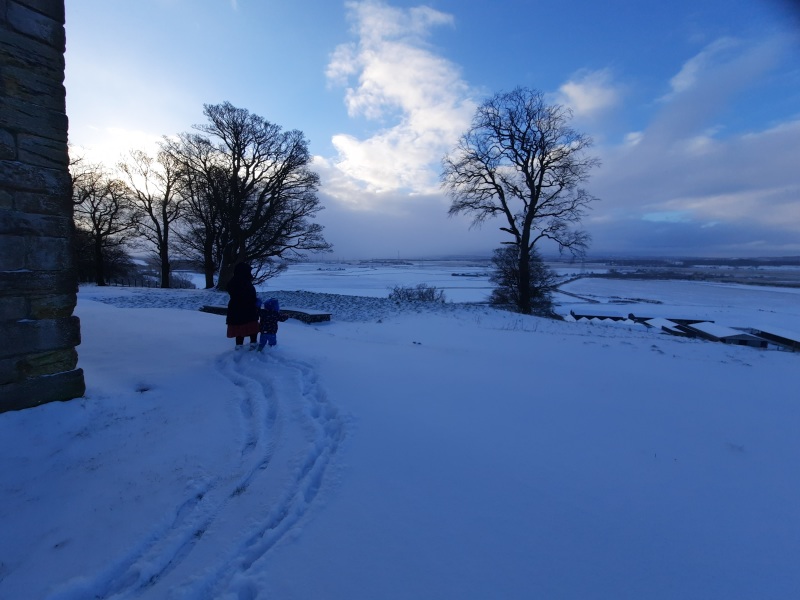 |
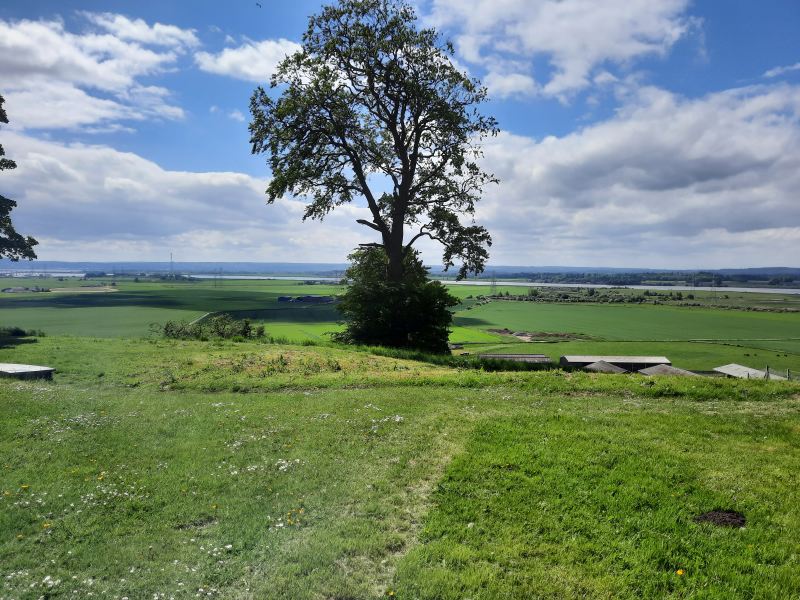 |
Some of the view to the south from the base of Clackmannan Tower on different days
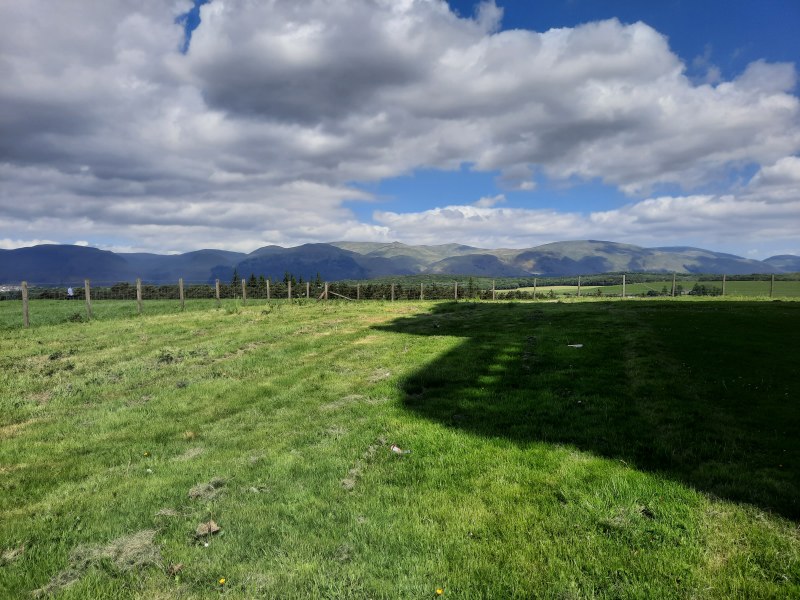
The view north from the tower at ground level to the Ochil hills
